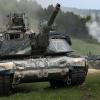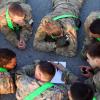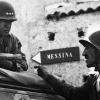One chapter of the Association of the U.S. Army wants to double its business members over the next three months, and if it can exceed its goal by even just a few members, the Fort Rucker-Wiregrass chapter of AUSA—already boasting thousands of individual members—would become the largest in Alabama.
“Membership equals capability and a greater opportunity to get funding,” said retired Col. Mark Jones, president of the AUSA Wiregrass chapter.
Funding for the military is always in flux, Jones said, and strong community support can’t be underestimated.
The chapter’s partnerships with local businesses...


















